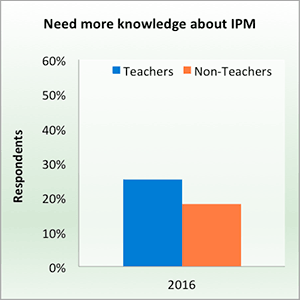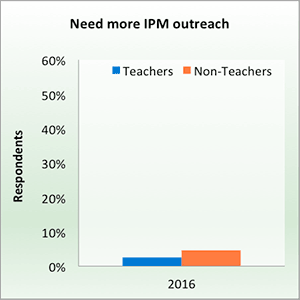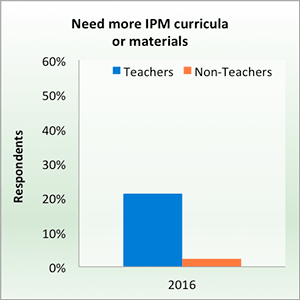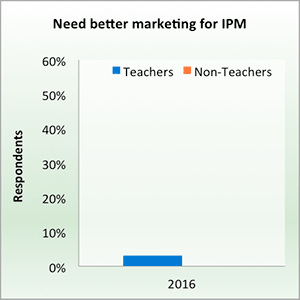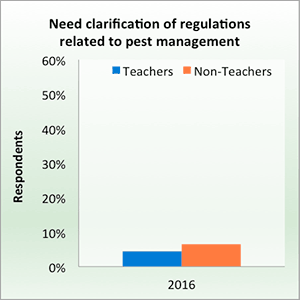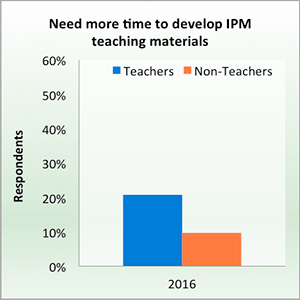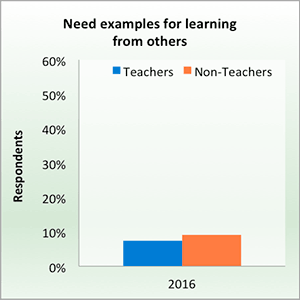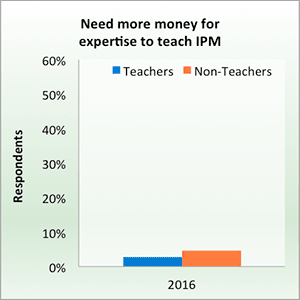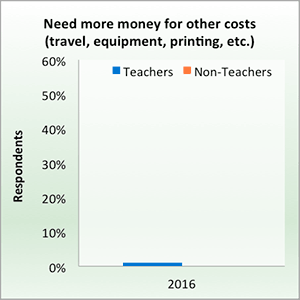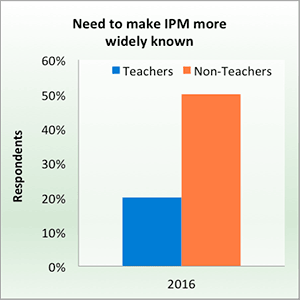Evaluation Update: Next Generation Education Signature Program
The NEIPMC is interested in knowing peoples’ limitations for adopting IPM. And, we now have a way to figure this out! We are exhibiting at conferences aligned with one of our five Signature Programs and actively engaging with individuals who represent organic and conventional agriculture, communities, climate science, technology and engineering, adult and youth education, and the built environment to find out what they think about IPM.
National Science Teachers Association Conference
Methods: This cross-sectional survey study investigated the barriers to IPM practices among teachers and non-teachers in a randomly selected, representative sample of 218 participants at the National Science Teachers Association Conference in Nashville, Tennessee. Data were collected on subjects participating in the conference in 2016, and opinions about barriers to IPM adoption were assessed using responses to a questionnaire.
Participants: Participants were divided into two categories, teachers (professors, educators, graduate students, teaching assistants) and non-teachers (gardeners, producers, pest professionals, administrators, and others).
Statistical analyses: The two-proportion z-test was used to compare responses from teachers and non-teachers.
We asked participants at the National Science Teachers Association Conference the following question: What are the two biggest challenges you face implementing sustainable / integrated pest management (IPM) solutions?
Results
|
|
|
|
|
|
|
|
|
|
|
|
|
|
|
|
The most significant barriers to IPM adoption for teachers were lack of IPM knowledge (25%) and need more IPM curricula or materials (21%). For the more diverse non-teacher audience, large differences are seen in responses, but not knowing what IPM is (50%) appeared to hinder implementation of IPM practices.
Significance: The findings will help us strategize our communications efforts and messaging to target specific groups in raising awareness and understanding about IPM. By better understanding the diverse IPM concerns of our clientele, the NEIPMC is better equipped to structure our strategies in order to enhance our knowledge-building and outreach efforts and make impacts in our local, regional, and national communities. We will continue to conduct this survey at future conferences and share the findings on our website.

